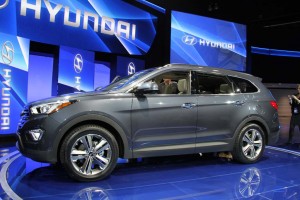If you bought a car in November odds are you paid more than you would have at almost any time in the past year. Transaction prices – what motorists actually spend after working in incentives and factory options – are at or near record levels.
That’s despite the fact that many manufacturers increased givebacks last month, hoping to keep sales momentum going. They’ve also been working with lenders to ensure that credit continues to become more readily available – though motorists have been stretching out loans and are now taking an average of 64 months to pay off a car purchase.
“Industry average transaction prices climb once again with consumers’ continued appetite for highly contended vehicles,” said Jesse Toprak, Senior Analyst at the data tracking service TrueCar. “Today’s consumers value a nicely equipped vehicle as much as they do a low cost of ownership. Automakers are getting better at providing all the modern conveniences consumers come to expect for more of their models, resulting in higher overall prices hence improved profitability.”
On average, U.S. motorists spent $30,835 to buy the typical new vehicle in November. That was a $335 jump from year-ago numbers and an increase of $346 compared to October 2012. Transaction prices dipped a bit earlier in the year as manufacturers took steps to forestall a threatened decline in demand.
The figures varied widely by manufacturer. Volkswagen led the market at an average transaction price, or ATP, of $33,610 last month. General Motors and Ford were close behind at $32,891 and $32,543, respectively. Hyundai, traditionally known for its “value” products, was at the other end of the scale, with an ATP of just $22,342. But among Japanese makers Honda ranked at the bottom, with an average $26,897 transaction price – about $800 lower than Nissan and $1,500 under Toyota.
Average transaction prices don’t necessarily mean one maker is charging less for, say, a midsize sedan, than a competitor. Ford and GM, for example, benefit from having a significant amount of sales in higher-priced light truck segments.
Incentives, on the whole, rose by 4.4% last month, to an industry average $2,764 compared with $2,647 in November 2011. But the more telling statistic was a 19.3% jump, on average, from the givebacks offered in October of this year.
There, trends varied even more dramatically by manufacturer. Chrysler and Ford each cut givebacks more than 20% compared to year ago levels, the former to $2,526, the latter to $2,307 per vehicle. Volkswagen – which hit a 39-year sales high in November – was the only other maker to cut back, about 10% year-over-year.
Nissan, however, raised its incentives to $4,273, a 45% jump from November 2011 and a whopping 80% from this past October. Only slightly behind were Hyundai and Korean sibling Kia. Hoping to overcome consumer backlash following revelations the makers had illegally inflated their mileage numbers, incentives jumped 29% compared to last year, at $1,586. Even so, The Korean carmakers still offered the lowest givebacks of any major brands.
November sales soared by about 15% year-over-year, and industry leaders anticipate the trend will continue – in part due to the increasing availability of financing. That’s especially true when it comes to higher-risk sub-prime car buyers, according to Melinda Zabritski, director of automotive credit at Experian Automotive.
“Expanding loans to lower-risk tiers opens the market for more car shoppers, while an increase in leasing means it is easier for consumers to get more vehicle for a lower monthly payment,” she said.
The financial tracking firm found sub-prime car loans jumped almost 3% during the third quarter – and now account for about a third of all vehicles that are financed.
The study also found that the typical loan during the third quarter was for an average 64 months – a month longer than just a year ago. The average loan also increased by $90 – perhaps reflecting added vehicle content – to $25,963.

